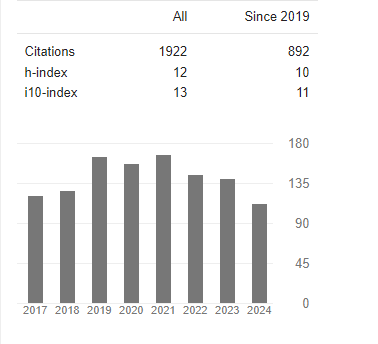Theory of Heat Transfer in Straight Round Pipes with Square and Triangular Turbulators Under High Reynolds Criteria
Abstract
Igor E Lobanov
Objectives: To carry out mathematical modeling of the structure of vortex zones between periodic flow turbulators with a surface arrangement of triangular and square transverse profiles on the basis of multi-block computing technologies based on solutions of the Reynolds equations (closed by means of the Menter shear stress transfer model) and energy equations (on multi-scale intersecting structured grids) with high Reynolds criteria Re = 106 with an exhaustive analysis of the corresponding current lines.
Method: The calculations were carried out on the basis of a theoretical method based on the solution of the Reynolds equations by the factorized finite-volume method, which are closed using the low-Reynolds model of the Menter shear stress transfer, and the energy equation on multi -scale intersecting structured grids (FCOM).
Result: Mathematical simulations of the heat exchange process in straight and round pipes with turbulators with d / D = 0.95 ... 0.90 and t / D = 0.25 ... 1.00 square and triangular cross-sections at large Reynolds numbers (Re = 106) on a foundation with multi-block computing technologies, which are based on solutions of the Reynolds equations and energy equations in a finite-volume and factorized way. It is found that the relative intensification of heat transfer [(Nu / Nusm) | Re = 106] / [(Nu / Nusm) | Re = 105] in round pipes with square air turbulators for large Reynolds numbers (Re = 106), which may well be relevant in the channels used in heat exchangers, may be higher with a large-scale increment of hydraulic resistance than for slightly smaller numbers (Re = 105), for relatively high flow turbulators d / D = 0. 90 for the entire range under consideration for the parameter of the relative step between them t / D = 0.25 ... 1.00 a little more than 3%; for turbulators of triangular cross-section, similar indicators are approximately the same. For lower square turbulators with d / D = 0.95, this increase in relative heat transfer for large Reynolds numbers (Re = 106) compared to smaller numbers (Re = 105) does not exceed 6%; for triangular cross-section turbulators, similar indicators are slightly more than 4%.
Conclusion: According to the results of calculations based on the developed model, it is possible to optimize the intensification of double turbulators, as well as to control the process of heat transfer intensification. It is shown that for higher square turbulators and at higher Reynolds numbers, a slight increase in the relative Nusselt number Nu / Nusm is accompanied by a significant increase in the relative hydraulic resistance due to the very significant influence of return currents, which can flow directly on the turbulator itself to the greater extent, the higher the Reynolds number; for triangular turbulators, the above trend persists and even deepens.



